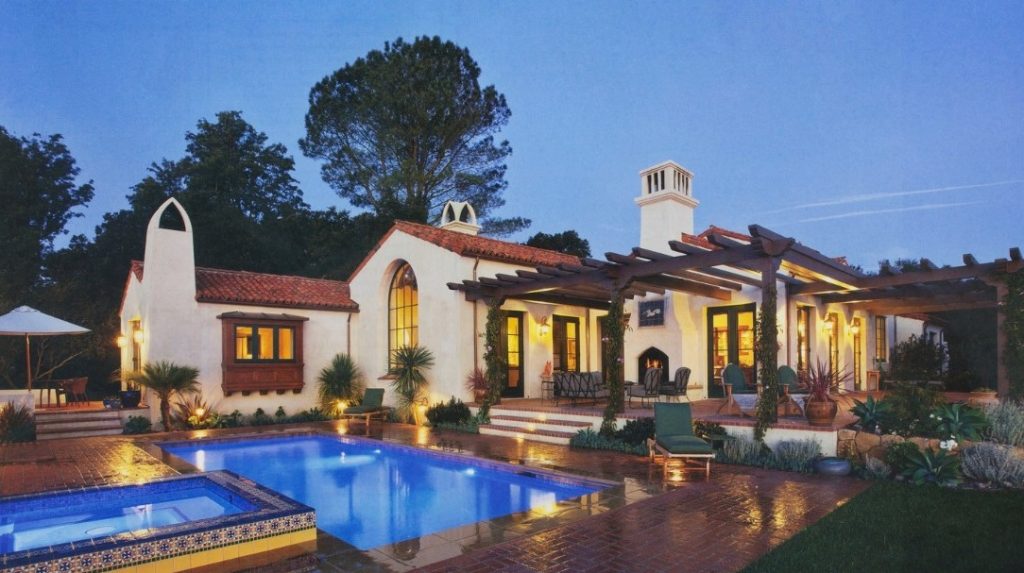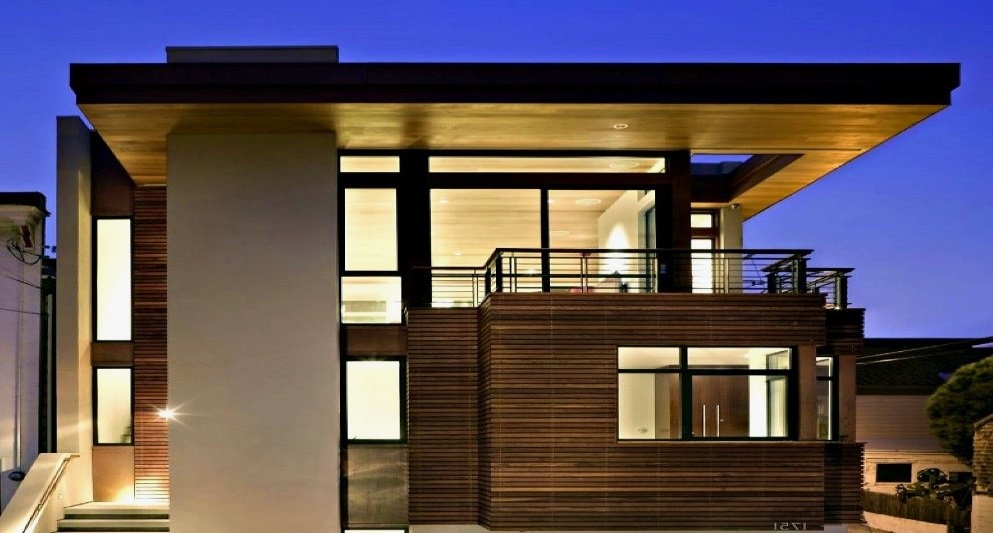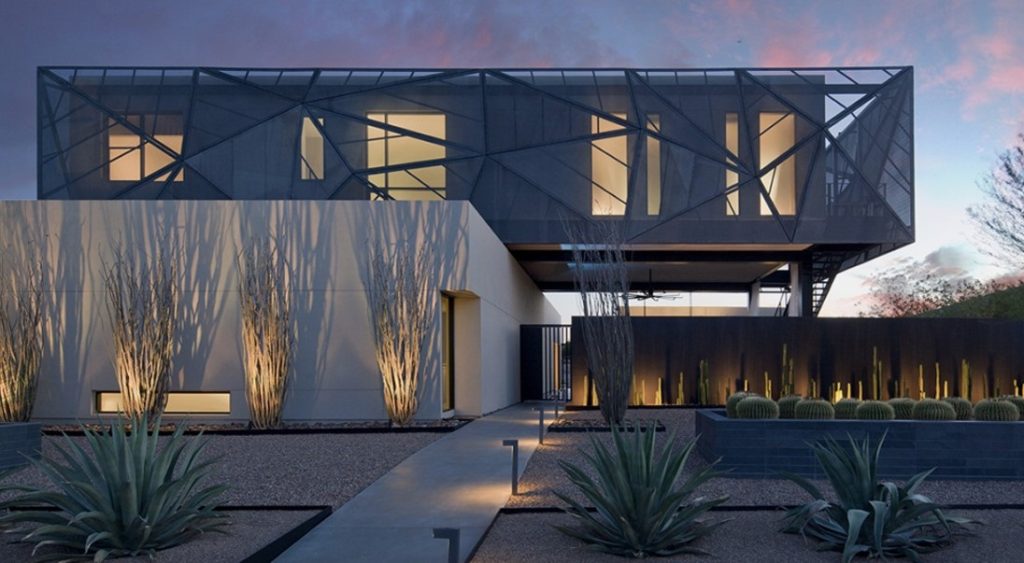
“Asian Style Homes” explores the enduring charm and distinctive features of homes inspired by Asian aesthetics. These residences showcase a harmonious blend of traditional craftsmanship, natural materials, and minimalist design principles. From the tranquil gardens of Japanese homes with their sliding doors and tatami mats to the intricate wood carvings and vibrant colors of Southeast Asian architecture, each style reflects a deep connection to nature and cultural heritage. Asian style homes embody a serene elegance and functional simplicity that create inviting living spaces infused with a sense of tranquility and timeless appeal.
Table of Contents
A. Definition of Asian Style Homes
Asian style homes, a term encompassing a vast and diverse range of architectural designs, originate from the multitude of cultures, climates, and historical influences found across the Asian continent. These homes are characterized not just by their aesthetic elements, but also by their functional design, deeply rooted in the cultural and philosophical beliefs of the region. From the minimalist elegance of Japanese architecture to the vibrant colors and intricate carvings of South Asian designs, Asian style homes often reflect a harmonious blend of nature, spirituality, and practicality.
Key features might include the use of natural materials like wood and stone, structures that promote airflow and natural light, and layout plans that emphasize balance and harmony with the surrounding environment. Gardens, water features, and other natural elements are often integral to these designs, reflecting the Asian ethos of living in harmony with nature.
B. Brief Overview of the Diversity in Asian Architecture
The diversity in Asian architecture is as vast as the continent itself, influenced by a myriad of factors like geography, climate, religion, and historical events. This diversity can be broadly categorized into several regional styles:
- East Asian Architecture: This includes Chinese, Japanese, and Korean styles. Traditional Chinese architecture is known for its pagodas, courtyards, and elaborate roof designs. Japanese architecture is renowned for its minimalist aesthetic, use of sliding doors (shoji), and tatami flooring. Korean architecture shares some similarities with these styles but has unique elements like ondol, a type of underfloor heating.
- Southeast Asian Architecture: This region includes countries like Thailand, Vietnam, and Indonesia, where architecture is often influenced by Buddhism and Hinduism. Common features include steep, multi-tiered roofs, ornate carvings, and extensive use of wood.
- South Asian Architecture: Encompassing countries like India, Pakistan, and Bangladesh, this style is marked by its diversity, ranging from the Islamic architecture of the Mughal Empire to the Hindu temple architecture of South India. Features often include domes, arches, and intricate ornamentation.
- Central and Western Asian Architecture: This includes the Islamic architecture of countries like Iran and Afghanistan, characterized by domes, minarets, and the use of geometric and floral patterns.
Each of these styles, while distinct, shares a common thread in their emphasis on harmony, functionality, and a deep connection with the cultural and historical context of the region.
Key Features of Asian Style Homes

A. Traditional Materials
- Use of Wood, Bamboo, and Stone: Asian style homes often utilize natural materials such as wood, bamboo, and stone for construction, providing a warm and organic feel.
- Incorporation of Natural Elements: There is a strong emphasis on incorporating natural elements like water features, plants, and rocks, blurring the boundaries between indoor and outdoor spaces.
B. Architectural Elements
- Roof Designs: a. Pagoda Roofs: Characterized by multiple tiers with upturned eaves, pagoda roofs are a distinctive feature, especially in Chinese and Japanese architecture. b. Sloping Roofs with Wide Eaves: Common in many Asian styles, these roofs provide shade and protection from the elements.
- Courtyards and Gardens: a. Emphasis on Outdoor Spaces: Asian homes often feature courtyards and gardens, promoting a connection with nature. b. Integration of Nature into the Living Environment: The design incorporates natural elements seamlessly into the living space, fostering a sense of tranquility.
- Symmetry and Balance: a. Feng Shui Principles: Design elements often follow Feng Shui principles to create a harmonious and balanced environment. b. Harmonious Design: There is a focus on achieving visual balance and harmony in the overall design.
C. Cultural Influences
- Influence of Buddhism and Confucianism: Cultural and spiritual elements from Buddhism and Confucianism often influence the design, fostering a sense of peace and reflection.
- Symbolism in Architectural Elements: Various architectural elements may carry symbolic meanings, reflecting cultural values and beliefs.
Regional Variations
A. Chinese Style Homes:
- Traditional Courtyard Houses (Siheyuan): Homes are often organized around a central courtyard, providing a private and serene outdoor space.
- Decorative Elements like Ming Dynasty Furniture: Incorporation of classic furniture designs from historical periods like the Ming Dynasty.
B. Japanese Style Homes:
- Minimalist Design: Japanese homes often embrace simplicity, with a focus on clean lines and minimalistic aesthetics.
- Tatami Mat Flooring and Sliding Doors (Fusuma): Traditional flooring and sliding doors contribute to a flexible and open living space.
C. Balinese Style Homes:
- Open-Air Pavilions (Bale): Balinese homes often feature open-air pavilions that blend with the surrounding landscape.
- Tropical Gardens and Water Features: Lush gardens and water elements contribute to a tropical and serene atmosphere.
Modern Adaptations
A. Fusion with Contemporary Design:
- Integration of Asian Elements in Modern Architecture: Contemporary homes may incorporate traditional Asian elements in innovative ways.
- Use of Traditional Materials in a Contemporary Context: Modern homes may use traditional materials in conjunction with contemporary design for a unique aesthetic.
B. Sustainable Practices:
- Eco-Friendly Designs: Asian-inspired homes often integrate sustainable practices and materials to promote environmental consciousness.
- Incorporation of Energy-Efficient Technologies: The use of modern, energy-efficient technologies aligns with the traditional emphasis on harmony with nature.
Popular Examples
A. Traditional Temples and Palaces
- Forbidden City in Beijing: A grand imperial palace complex representing traditional Chinese architecture with its intricate wooden structures and pagoda roofs.
- Kinkaku-ji in Kyoto: Also known as the Golden Pavilion, this Zen Buddhist temple showcases Japanese architecture, featuring a stunning golden exterior and beautiful surrounding gardens.
B. Contemporary Asian Style Homes
- Examples of Modern Residences Inspired by Traditional Asian Design: Architectural projects that blend traditional Asian elements with modern design principles, creating unique and stylish homes.
Interior Design of Asian Style Homes

A. Furniture and Decor
- Traditional Furniture Styles: Incorporation of classic styles such as Chinese Ming and Qing dynasty furniture, Oriental-inspired residences, characterized by detailed craftsmanship and elegant designs.
- Use of Silk, Paper, and Bamboo in Decor: Traditional materials like silk for textiles, paper for screens, and bamboo for furniture, contributing to the overall aesthetic.
B. Color Palette
- Earthy Tones and Natural Colors: Preference for a color palette inspired by nature, including earthy tones such as browns and greens.
- Symbolic Use of Colors in Different Asian Cultures: Consideration of cultural symbolism in color choices, reflecting traditions and beliefs.
Challenges in Designing Asian Style Homes
A. Adaptation to Modern Lifestyles
- Balancing Tradition with Contemporary Needs: Striking a balance between preserving traditional aesthetics and meeting the functional requirements of modern living spaces.
- Functional Aspects in Modern Living Spaces: Incorporating modern amenities and conveniences while maintaining the cultural integrity of the design.
B. Preservation of Cultural Authenticity
- Ensuring Cultural Sensitivity in Design: Addressing cultural nuances and ensuring that the design respects and reflects the cultural heritage without appropriating or misrepresenting.
- Challenges in Maintaining Traditional Craftsmanship: Preserving traditional craftsmanship skills, which may face challenges due to modernization and changing societal preferences.
Popularity and Influence
A. Global Appeal
- Increasing Popularity in Western Countries: Growing interest and adoption of Asian-inspired architectural and interior design elements in Western countries.
- Influence on Mainstream Architecture and Interior Design Trends: The impact of Asian style on shaping mainstream trends in global architecture and interior design.
B. Impact on Real Estate
- Attractiveness of Asian-Inspired Homes in the Real Estate Market: The desirability of homes with Asian design influences, potentially affecting property values.
- Investment in Cultural Heritage Preservation: Recognition and investment in preserving cultural heritage through the maintenance and restoration of Asian-inspired homes.
Future Trends

A. Innovation in Asian Style Architecture
- Experimentation with Materials and Construction Techniques: Exploring new materials and construction methods while staying true to traditional aesthetics.
- Sustainable and Eco-Friendly Advancements: Incorporating sustainable practices and eco-friendly technologies into Asian-style architecture.
B. Fusion with Smart Home Technologies
- Integration of Traditional Design with Modern Technology: Incorporating smart home technologies seamlessly into the design, maintaining the balance between tradition and modernity.
- Creating Smart, Energy-Efficient Asian Style Homes: Implementing energy-efficient solutions and smart home features without compromising the authenticity of Asian design.
Case Study: Modern Asian Style Residence
A. Showcase of a Contemporary Home Blending Traditional and Modern Elements
- Architectural Design Features: Highlighting specific architectural elements that seamlessly blend Traditional Asian houses design with modern innovations.
- Interior Decor and Furnishing Choices: Showcasing how the interior spaces of the residence incorporate traditional Asian furnishings and decor alongside modern elements, creating a harmonious living environment.
Breakdown Table:
| Section | Key Points |
| Introduction | Definition of Asian Style Homes, diverse architectural designs, functional and cultural influences. |
| Diversity in Asian Architecture | East Asian, Southeast Asian, South Asian, Central and Western Asian styles. |
| Key Features of Asian Style Homes | Traditional materials, architectural elements, cultural influences, regional variations. |
| Chinese Style Homes | Siheyuan, Ming Dynasty furniture. |
| Japanese Style Homes | Minimalist design, tatami mat flooring, sliding doors. |
| Balinese Style Homes | Open-air pavilions (Bale), tropical gardens, water features. |
| Modern Adaptations | Fusion with contemporary design, sustainable practices. |
| Popular Examples | Forbidden City in Beijing, Kinkaku-ji in Kyoto, modern residences inspired by Asian design. |
| Interior Design of Asian Homes | Traditional furniture styles, use of silk, paper, and bamboo, earthy color palette, symbolic use of colors. |
| Challenges in Design | Balancing tradition with contemporary needs, preservation of cultural authenticity. |
| Popularity and Influence | Global appeal, impact on mainstream architecture, influence on real estate. |
| Future Trends | Innovation in architecture, sustainable advancements, fusion with smart home technologies. |
| Case Study | Showcase of a contemporary home blending traditional and modern elements. |
Conclusion Asian Style Homes:
In conclusion, Asian style homes embody a rich tapestry of cultural, historical, and philosophical influences. From traditional materials and architectural elements to regional variations and modern adaptations, these homes continue to captivate with their timeless beauty. The challenges of balancing tradition with contemporary needs and the growing global appeal showcase the evolving nature of Asian-inspired design. The future trends point towards innovation, sustainability, and the integration of smart home technologies while preserving the authenticity of Asian aesthetics.
FAQs (Frequently Asked Questions):
- What defines Asian Style Homes?
- Asian style homes are defined by a harmonious blend of cultural, historical, and philosophical influences, showcasing aesthetic and functional design elements rooted in the region’s diverse traditions.
- What are the key features of Asian style homes?
- Key features include the use of natural materials, incorporation of natural elements, distinctive roof designs, emphasis on outdoor spaces, symmetry and balance, and cultural influences from Buddhism and Confucianism.
- How diverse is Asian architecture?
- Asian architecture is highly diverse, with distinct styles in East Asia, Southeast Asia, South Asia, and Central/Western Asia, each influenced by geography, climate, religion, and historical events.
- What are some examples of Chinese style homes?
- Traditional Chinese homes often include courtyard houses (Siheyuan) and incorporate decorative elements like Ming Dynasty furniture.
- What characterizes Japanese style homes?
- Japanese homes are known for their minimalist design, tatami mat flooring, sliding doors (Fusuma), and a focus on clean lines and aesthetics.
- What are the challenges in designing Asian style homes for modern living?
- Balancing tradition with contemporary needs and incorporating modern amenities without compromising cultural integrity are significant challenges.
- How does Asian style influence global architecture and interior design trends?
- Asian style has a growing appeal in Western countries, influencing mainstream architecture and interior design trends.
- What is the future of Asian style architecture?
- The future involves innovation in materials and construction techniques, sustainable advancements, and the fusion of traditional design with smart home technologies.
- How can cultural authenticity be preserved in Asian style homes?
- Preserving cultural authenticity involves addressing cultural nuances, respecting heritage, and ensuring that the design reflects the rich cultural background without misappropriation.
- Are Asian-inspired homes popular in the real estate market?
- Yes, there is an increasing popularity of homes with Asian design influences, potentially impacting property values. Recognition and investment in preserving cultural heritage contribute to this appeal.

